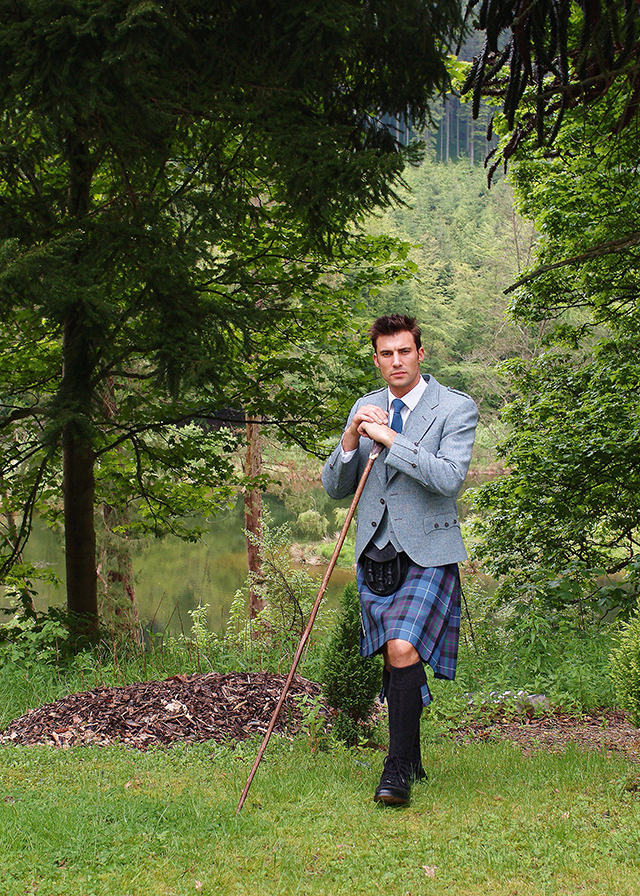
You might have the gear, but if you have no idea how to put it on, then you’re fighting a losing battle
Words by Sarah Gillespie
Hands up if you’re excited to wear your kilt outfit? Keep them up if you’re confident about how to put it on. It expect a few hands went down there. If you’ve never worn a kilt, or if you got your mum to dress you for prom, don’t try to wing it or you’ll find yourself in a total flap on the morning of your wedding. You’ll probably end the night looking dishevelled and slightly the worse for wear, but you certainly don’t want to start the day looking like you’ve come straight from your stag do. Knowing the correct order to get dressed in is key. You’ll also want to swot up on the different options available for your jacket and kilt. Luckily, we’ve done all your homework for you – all you have to do is read on…
Alasdair Macleod of Geoffrey the Tailor explains how to kilt it
“In our firm there are basically three types of kilts: traditional hand-sewn, traditional machine-sewn and casual machine-sewn. The traditional hand-sewn kilt is around eight yards of cloth, high-waisted with canvas and linen lining, and pleats cut away under the lining to make the top less bulky. It’s all hand-stitched (with the exception of the waistband attachment) and is shaped to the small of the back.
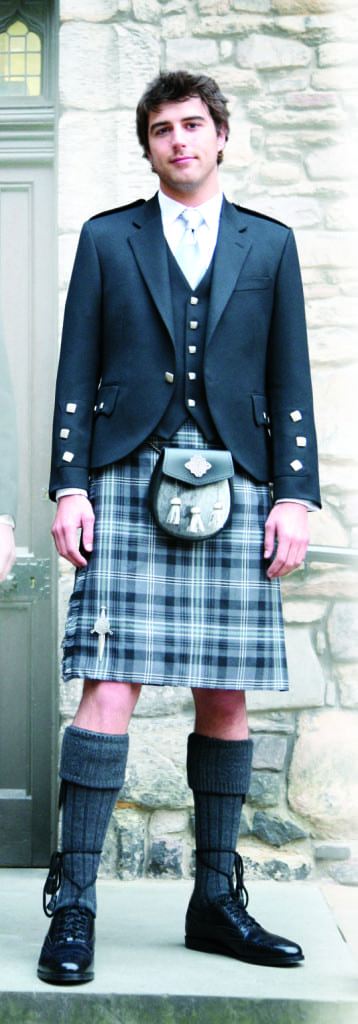

The machine-sewn uses the same materials but is made using a machine, so it’s less shaped. It is sometimes described as ‘hand-finished’, as the buckle attachments are sewn on by hand. The casual is low-waisted, sits on the hip, and uses less lining and around six yards of cloth.
“You can also get something called a ‘breacan feile’, but this style is older, untailored, the plaid folded and belted into a kilt. It’s more for taking part in a historical re-enactment than for getting married. It dates back as far as the 14th or 15th century, and one early picture of that style shows it being worn outside the trews!
“The tailored kilt probably dates from the early 1700s, and was adopted later and preserved by the British Army as part of Highland Regimental uniform.
“Traditional kilts are made to measure, using the sizes of waist, hips and length (to the top of the knee). The pleats at the back most often show the full tartan pattern repeated right across the kilt, but they can also be arranged in order to show one particular stripe of the pattern repeated on each pleat. This is sometimes called military pleating.
“Our kilts are all made to fasten on the same side. Some people disagree with this and design the ladies’ kilt to fasten to the left, like buttons.
“Good-quality kilts are always made in pure wool worsteds. We prefer to use 16-ounce heavyweight for our gents’ kilts, or 13-ounce mediumweight for our lightest. We make ladies’ and children’s kilts with both light and mediumweights. A kilt made from polyester or viscose fabric will never hang or swing like wool.
“Popular tartans colours at the moment are shades of grey, and often purple – this is a fashion that comes and goes. Popular traditional tartans are Black Watch, Hunting Stewart and Hunting MacDonald of the Isles. From the 1960s to the 1980s everyone wore cream socks, but fashion has now swung to dark hose for formalwear, which is a return to theolder custom.”
JACK IT BACK
Craig Halley and Cameron Foster from Slanj Kilts give us the lowdown on kilt jackets
“Weddings ain’t what they used to be. We’re increasingly seeing couples use their nuptials as a way to express themselves and their tastes rather than feeling obliged to simply follow some strict set of rules. For our part, we’ve tried to rise to the challenge by providing more options than ever before. Of course, there are large numbers of new tartans in every colour imaginable, but we find it’s our growing range of jackets that people are turning to in order to create a kilt outfit that is just right for them.”
The Princ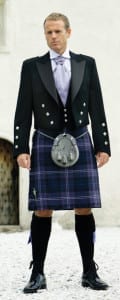

“Short on the body with tails at the back, this is the kilt jacket that Fred Astaire would have worn had he ever tied the knot in Scotland. Traditionally, the Prince Charlie would be worn with a three-button waistcoat and a bow tie, but a five-button version is also popular for those who plan to wear a cravat. Once ubiquitous, the Prince Charlie has fallen out of favour but we’re seeing signs of a comeback among those who are looking to keep things classy. Note that with this cut of jacket, it’s important to get your kilt sitting higher on the waist – you don’t want to have your shirt spilling out after your first Gay Gordons.”
The Black Wool Crail
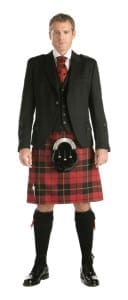

Tweed Crails
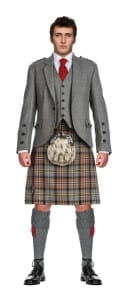

With a bit of thought and perhaps some expert guidance, you can create a stunning and unique outfit that reflects your tastes in the same way as your big day does. At Slanj Kilts, we have a great off-the-peg range in charcoal, green, blue and russet red, with dozens of made-to-order options available too.
“New for 2015 is the Light Grey Crail, which has been catching many a customer’s eye on the shop floor over the last few weeks. It has proved so popular that we are thinking of putting it into our hire range – with its fresh spring/summer look, we think it could be a big hit!”
Suited and booted
All the essentials of your w-day ensemble








